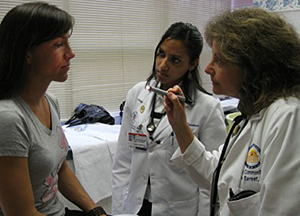Scope of Problem
Tobacco, alcohol and drug misuse is a major, preventable public health problem. Tobacco, alcohol, and illicit drugs are three of the leading causes of preventable deaths in the United States. Federal estimates place the national annual economic cost of alcohol and drug abuse to society at $375 billion (NIDA and NIAAA, 1998). Substance misuse has a far reaching financial, social, and emotional impact on our health care and criminal justice systems, work place productivity and health of families and communities across our country.
Healthy People 2010, a set of health objectives for the U.S. to achieve over the first decade of the 21st century, lists “Substance Abuse” as one of its main areas of focus. The health care system offers various opportunities to identify the onset of substance use in children and youth, and to identify and treat individuals of any age who are at risk for substance-related disorders. Such identification and treatment has been proven to make a considerable contribution toward reducing the associated adverse medical and social effects on the individuals involved, as well as their families, communities, and society as a whole.
The White House Office of National Drug Control Policy (ONDCP) has identified increased screening, prevention and brief intervention for alcohol and other substance use disorders as one of the primary initiatives in its “demand reduction” efforts. In addition, various professional associations and government agencies involved with health care have recommended the implementation of screening and intervention for substance-related problems including: the American Academy of Pediatrics, the American Medical Association, the American Society of Addiction Medicine, the Canadian Task Force on Preventive Health Care, the National Institute on Alcohol Abuse and Alcoholism, and the US Preventive Services Task Force.
Recently, the Joint Commission on Accreditation of Healthcare Organizations (Joint Commission), with input from healthcare professionals, providers, measurement experts, consumers, government agencies and employers, began to undertake the development of standards for screening and brief intervention for alcohol and other drugs. These standards would help guide hospitals and other healthcare providers on the standards of quality and safety related to SBIRT.

